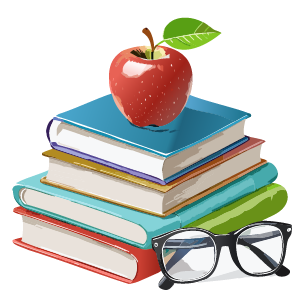Managing and treating dysgraphia involves a combination of interventions that target the specific difficulties associated with the condition. Here’s a comprehensive guide:
Educational Strategies
- Individualized Education Program (IEP) or 504 Plan: If a student is diagnosed with dysgraphia, they may be eligible for an IEP or a 504 Plan. These plans provide accommodations like extended time on assignments, using a computer for writing, or modified writing assignments.
- Use of Technology: Encourage using computers or tablets with word processing software that includes spell-check and grammar-check features. Speech-to-text software can also be highly beneficial.
- Graphic Organizers: These graphic organizer tools help students plan their writing by breaking down the task into manageable steps, making it easier to organize thoughts and ideas before writing.
- Keyboarding Skills: Teaching typing skills can help students who struggle with handwriting, as it often allows them to express their ideas more fluently.
Occupational Therapy
- Fine Motor Skills Development: Occupational therapists can help students improve their fine motor skills, which are crucial for writing. Exercises may include activities that strengthen hand muscles, improve coordination, and increase hand-eye coordination.
- Handwriting Practice: Therapists may use specific programs designed to improve handwriting skills, such as Handwriting Without Tears. These programs focus on forming letters correctly, spacing words, and writing with appropriate pressure.
Multisensory Instruction
- Orton-Gillingham Approach: This method, often used for reading difficulties, can be adapted for writing. It uses multisensory techniques to teach writing, which can help students with dysgraphia by engaging multiple senses during the learning process.
- Tactile Learning Tools: Using materials like sandpaper letters or forming letters with clay can help reinforce letter shapes and formation through touch.
Alternative Forms of Assessment
- Oral Assessments: For students who struggle with written expression, consider allowing them to demonstrate their knowledge orally instead of through written work.
- Project-Based Assessments: Offering alternative ways to complete assignments, such as creating a video, doing a presentation, or constructing a model, can help students with dysgraphia showcase their understanding without relying on writing.
Executive Function Support
- Time Management Tools: Provide planners, timers, and checklists to help students manage their time and break assignments into smaller, manageable tasks.
- Organizational Strategies: Teach students how to organize their work and materials. Color-coded folders, binders, and labels can help students find and keep track of their work.
Emotional and Social Support
- Encouragement and Positive Reinforcement: Recognize the effort, not just the outcome. Celebrate small victories to build confidence and reduce frustration.
- Counseling or Therapy: If a student’s self-esteem is affected by their struggles with writing, counseling can help them develop coping strategies and improve their self-confidence.
Homeschooling Techniques
- Home Practice: Encourage writing in a low-pressure environment. Journaling, storytelling, or typing shopping lists can make writing more enjoyable.
Medication
- Attention and Focus: In some cases, students with dysgraphia also have attention disorders, such as ADHD. Medication prescribed for these conditions can sometimes improve focus and concentration, indirectly benefiting writing skills.
Regular Monitoring and Adjustment
- Progress Tracking: Monitor the student’s progress regularly and adjust strategies as needed. What works for one student may not work for another, so flexibility is key.
When used together, these strategies can help manage dysgraphia and improve students’ ability to express themselves in writing.


